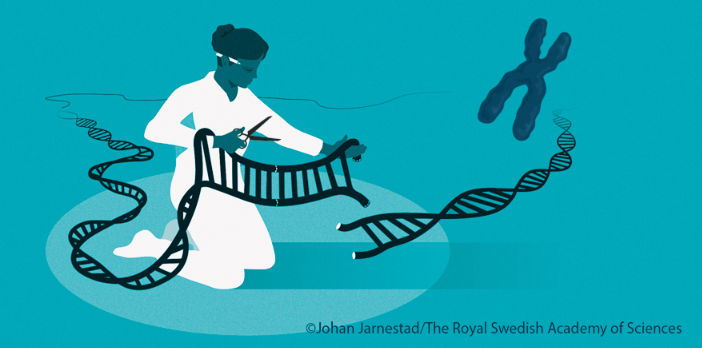Mobile DNA Elements Can Disrupt Gene Expression And Cause Biological Variation, Study Shows
Numerous mouse strains show great biological variation in features such as behavior, coat color and susceptibility to cancer and other diseases
The many short pieces of mobile DNA that exist in the genome can contribute to significant biological differences between lineages of mice, according to a new study led by researchers at the Ohio State University Comprehensive Cancer Center – Arthur G. James Cancer Hospital and Richard J. Solove Research Institute (OSUCCC – James).
The movable pieces of DNA are called transposons or “jumping genes” because they can move from one chromosomal location to another. Unlike viruses, they are not infectious and do not move from cell to cell. They have accumulated over time in the genomes of both mice and humans and now make up about half of genomic DNA in both.
For this study, researchers mapped the genomic locations of certain transposons called endogenous retroviruses (ERVs) in diverse mouse strains. They compared the different strains to learn how ERVs might influence gene expression. They found that ERVs can significantly disrupt gene expression by prematurely halting gene transcription, even when the ERV is located more than 12 thousand base pairs away in the same chromosome. They also found that the disruptive influence is affected by the gender of the parent that supplied the ERV.
“These findings add an interesting new angle to our understanding of fundamental mechanisms of natural variation and human biology, and possibly cancer and other diseases,” says principal investigator Dr. David E. Symer, assistant professor of molecular virology, immunology and medical genetics and a member of the Human Cancer Genetics Program at the OSUCCC – James.
“We showed that gene expression can be influenced very strongly by a transposon located quite a distance from the premature stop site – up to many thousands of base pairs away in the genomic DNA. We also found that gene expression is influenced by whether the ERV was inherited from the father or the mother,” he says.
A mouse gene containing an ERV inherited from the father often produced only an incomplete, truncated form of messenger RNA (mRNA); if the ERV came from the mother, not only the truncated transcript but also nearly normal levels of the full-length mRNA were produced from the gene.
“We believe this is an unusual, interesting example of a well-known phenomenon called DNA imprinting,” Symer says. “We are now conducting experiments to understand how premature termination of gene expression can be triggered by the transposons, and also how the parent-of-origin effect occurs.”
By comparing patterns of gene expression near the ERVs that were present or absent in the different strains, the researchers found about 100 genes whose expression appears to be disrupted when an ERV is present nearby.
“We observed very, very strong disruption of certain mouse genes by ERVs acting at a long genomic distance, and the resulting expression differences – up to almost 50-fold changes – can have major biological consequences that distinguish between the strains,” Symer says.
Original publication
Most read news
Other news from the department science

Get the life science industry in your inbox
By submitting this form you agree that LUMITOS AG will send you the newsletter(s) selected above by email. Your data will not be passed on to third parties. Your data will be stored and processed in accordance with our data protection regulations. LUMITOS may contact you by email for the purpose of advertising or market and opinion surveys. You can revoke your consent at any time without giving reasons to LUMITOS AG, Ernst-Augustin-Str. 2, 12489 Berlin, Germany or by e-mail at revoke@lumitos.com with effect for the future. In addition, each email contains a link to unsubscribe from the corresponding newsletter.
Most read news
More news from our other portals
Last viewed contents

Nobel Prize in Chemistry 2020 “for the development of a method for genome editing” - Genetic scissors: a tool for rewriting the code of life
Magic helps unmask how the brain works
Laryngopharyngeal_Reflux_Disease
Vaccine
Prostate Cancer Survival Rates Improved Since Introduction of PSA Testing - Survival Rate for African American Men Now Comparable to Caucasians, The Journal of Urology Reports























































